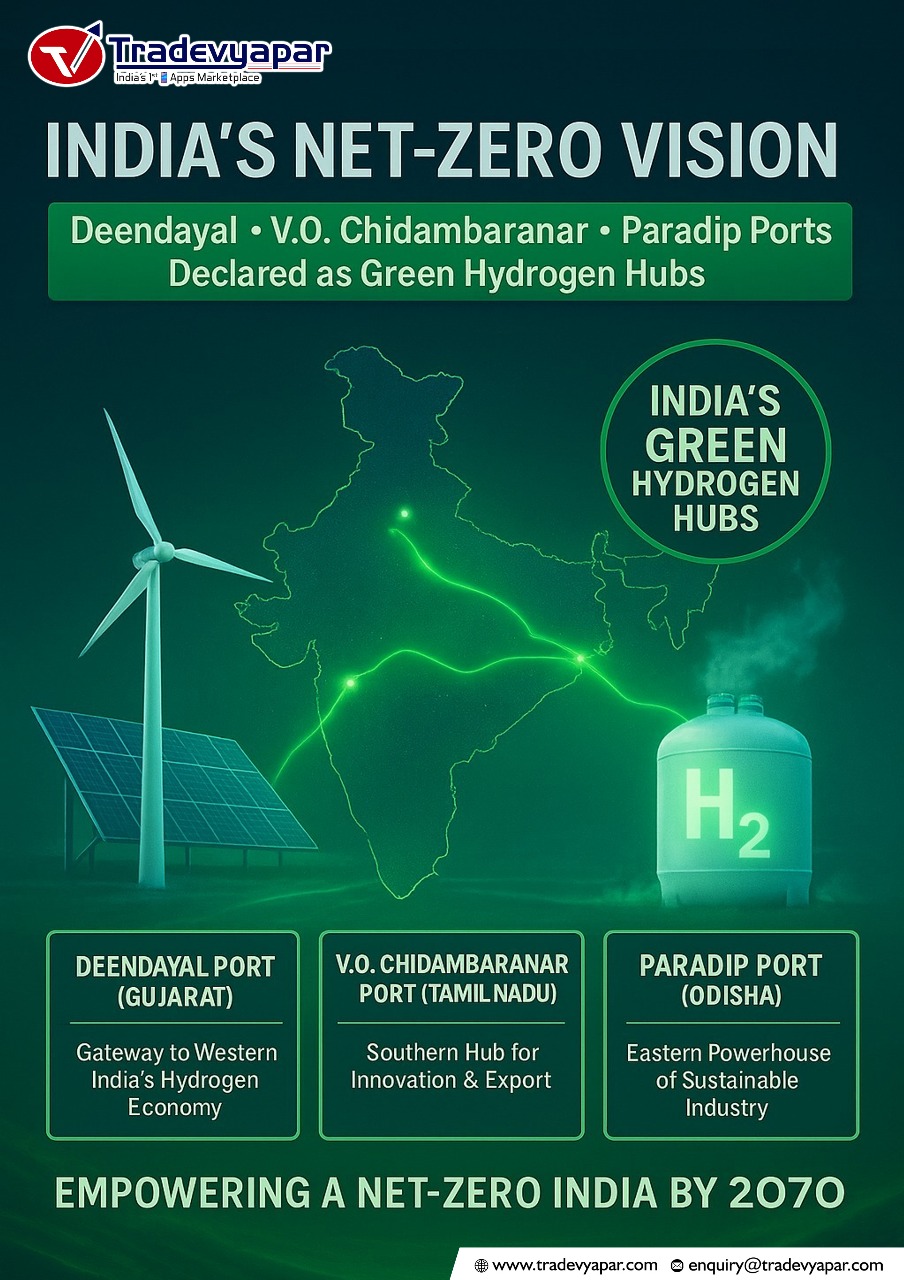Posted By : Admin on 15-10-2025
India's Net-Zero Vision: Deendayal,
V.O. Chidambaranar, and Paradip Ports Named Green Hydrogen Hubs
India has designated Deendayal Port, V.O.
Chidambaranar Port, and Paradip Port as Green Hydrogen Hubs. This strategic
move, part of the National Green Hydrogen Mission, aims to use these ports as
centers for producing, storing, and distributing green hydrogen. The initiative
will boost clean energy investment and help India achieve its net-zero goals.
India has made a big leap towards clean
energy leadership by officially declaring Deendayal Port Authority (Gujarat),
V.O. Chidambaranar Port Authority (Tamil Nadu) and Paradip Port Authority
(Odisha) as Green Hydrogen Hubs. Declared by the Union Minister for Ports,
Shipping and Waterways, Sarbananda Sonowal, this is in line with the country's
intention to become net zero carbon neutral by the year 2070 and aligns with
its commitment to climate action and energy security.
Why Green Hydrogen?
Green hydrogen is generated through
renewable resources like wind and solar, releasing zero carbon emissions on
consumption. Its use is essential for decarbonizing major sectors like
industry, transport, and power generation. Through green hydrogen, India looks
to curtail dependence on fossil fuels, enhance energy security, and become a
global clean fuel technology leader.
The selection of major ports as hydrogen
hubs captures their existing import-export infrastructure and industrial
operations. Ports provide strategic connectivity and logistics, positioning
them as the best place to produce, store, and distribute hydrogen. This allows
industries to cluster around these nodes, accelerating the transition to a
hydrogen economy.
Cluster-Based Development Approach
India's cluster approach to hydrogen hub
development clusters related projects into a specified geography. The cluster
enables shared infrastructure, realizes economies of scale, and promotes early
innovation and investment. Multiple stakeholder integration also boosts
collaborative research and technology development for hydrogen production and
use.
Hydrogen Valley Innovation Clusters
(HVIC)
Backed by policy structures, Hydrogen
Valley Innovation Clusters (HVIC) offer investment guidance, technology
advancement, and government assistance. HVICs are intended to foster hydrogen
megaprojects and enable industrial collaborations, speeding up the transition
towards cleaner fuel across the country.
The branding of these ports as green
hydrogen hubs will unlock investments, drive research into clean technologies,
and drive the creation of jobs. These projects deepen regional economies and
catalyse sustainable industrial development in line with India's vision for a
low-carbon future.
In short, the strategic initiative to set
up green hydrogen hubs in Deendayal, V.O. Chidambaranar, and Paradip ports is a
landmark moment in India's journey towards clean energy, reconciling economic
development with ecological responsibility.
